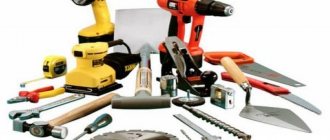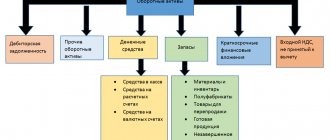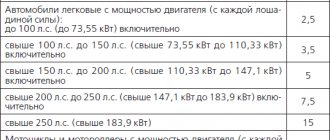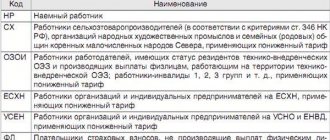Components of household supplies and equipment
Accounting for inventory and household supplies (IHP) is carried out at the place of their storage and location. Typically, the following groups are used:
- Tools and devices that have universal use. They are used to manufacture a variety of products.
- Molds and similar items used for the production of certain types of products or to fulfill a single individual order.
- Containers that are used directly in the technological process.
- Production equipment.
- Household equipment.
- Instruments, laboratory equipment and automated installations.
- Working clothes and safety footwear.
- Other types of ICP.
Accounting for inventory and household supplies as part of the operating system
Those types of household equipment that are expected to be used for more than 12 months should be accounted for as part of fixed assets. When developing accounting policies, you should not miss the limitation of their cost. Within its boundaries, operating systems with a period of use of more than a year are taken into account among the inventories. The upper limit is 40 thousand rubles.
You can view the inventory card.
Summing up
What applies to inventory and household supplies? Positions operated for up to a year, with a price of up to 50 minimum wages for the region, positions valued at a certain amount specified in the company’s accounting policy. This includes clothing, shoes, bedding, cutlery, office supplies, and tools used in the work process of a wide variety of departments, divisions, and officials. The repayment of the cost is carried out taking into account the rules introduced in 2011 by the Ministry of Finance, prescribed in the instructions for accounting for inventories.
Accounting for inventory and household supplies as part of the inventory
ICP with a useful life of up to a year should be correctly considered as one of the components of the MPZ. For these purposes, the account is used. 10.9. The purchase of household equipment is formalized and reflected in accounting in the same way as it is provided for materials. Read also the article: → “Accounting for goods and products in the warehouse”
The main wiring used in the company:
| Debit | Credit | Explanation |
| 10.9 | 15, 23, 60 | IHPs are accepted for accounting at discount prices |
| 68, 70, 71 ,69 | Reflected the costs of purchasing IHP | |
| 20, 23, 29, 44 | 10.9 | Write-off of the full cost of industrial equipment that has been put into operation |
Example 1. I purchased household gloves from Rostok LLC in the amount of 58 thousand rubles. VAT – 10,440. Accessories were delivered by our own transport.
Subject to write-off:
- The cost of transport services is 8 thousand rubles;
- Travel allowances paid to the forwarder – 2.8 thousand rubles.
The following entries appear in the accounting:
| Debit | Credit | Explanation | Amount, rub. |
| 10 (11) | 60 | Gloves purchased from supplier | 58 000,00 |
| 19 (3) | 60 | VAT reflection | 10 440,00 |
| 10 (11) | 23 (3) | Write-off of transportation expenses | 8 000,00 |
| 10 (11) | 71 | Write-off of travel expenses | 2 800,00 |
| 60 | 51 | The debt to the supplier has been paid | 68 440,000 |
Documentation of the movement of inventory and household supplies
When household inventory is released from the warehouse, a demand invoice is issued according to f. No. M-11. It contains information about the department where the ICPs are issued, and the account number containing cost accounting for this department.
In the process of complete expenditure of household equipment, acts are drawn up reflecting its write-off. Based on such documents, the cost of the IPH is included in the costs.
Important! Write-off acts must be drawn up separately for different types of household supplies and equipment.
Accounting for special equipment in 1C: Accounting 8.3: transfer, return and write-off
Special equipment is a special unique device, inventory or tools that are used in production and can be taken into account as materials or fixed assets, and this will depend on the cost.
In the article we will look at the example of materials. First, you need to enter the required inventory into the “Nomenclature” directory and indicate the type of nomenclature “Special equipment”. The program will automatically indicate the score 10.10 and 10.11.2.
Also, special equipment must be registered using the document “Receipts (acts, invoices)” in the “Purchases” menu item.
In the “Warehouse” menu item there is a block “Workwear and equipment”, which contains all the necessary documents to reflect the special equipment.
Document “Transfer of materials into operation”.
In the new document, fill in the necessary details and move on to filling out the “Special Equipment” tab. We will indicate the required material in it.
In the tabular section, select the required special equipment and fill in the fields. In the “Purpose of use” field, create a new directory element in which we indicate:
- “Name” - the field is filled in by the user and can specify an arbitrary name.
- “Repayment method” - in the example we indicate “Repay the cost upon transfer to operation.”
- “Useful life (in months)” is also indicated by the user and will depend on the material itself.
- “Method of reflecting expenses” - the example indicates what will happen to account 26. The user himself can create the necessary element in the directory and indicate the required account.
The “Account Accounts” and “Transfer Account” fields are set automatically by the program. We carry out the document and write it down.
Posting a document.
The repayment method will occur every month during the specified period (in the example 11 months) when closing the month (processing “Closing the month”). This processing will perform cost repayment in proportion to production.
In the “Material Production” document, the user will need to indicate special equipment and the volume of manufactured products every month.
Document “Return of materials from service”.
The document is used if a material is removed from service before its useful life has expired or before it is completely depleted.
This document is also located on the “Warehouse” menu tab, but it can also be created based on the transfer document in operation.
Let's create a new document. In it, fill in the necessary details and go to the “Special equipment” tab. We will indicate our special equipment and select the document “Batch”, in it we will indicate the document “Transfer of materials for operation”. After which the user indicates the amount of return, and the program automatically enters the accounting account and transfer account.
After posting the document, transactions are generated.
Document “Decommissioning of materials”
Let’s create a new document “Decommissioning of materials”. In this document, we fill out the “Special equipment” tab, in which we indicate the required item item for write-off. The “Batch” column will appear automatically. Also, the “Write-offs of expenses” tab will be available to the user to use by default or to indicate your option in the document.
When posting the document, postings will be generated.
If the write-off document was generated before the entire amount of special equipment was paid off, then the document will create a posting that will display the amount to write off the cost.
Using an inventory and household supplies card
A document called a card is a specialized form of primary documentation in the field of accounting. With its help, information about the industrial property received by the enterprise is recorded. The card takes into account IHPs whose useful life is more than one year.
Maintaining a card allows you to:
- receive prompt information about how well the organization and its divisions are provided with the necessary equipment;
- control the movement of each element of the ICP.
Important! An individual company or firm has the right to use the specified sample document or create it independently. But at the same time, all the necessary components must be preserved.
Before entering information into the card, household supplies and equipment must be collected according to one of the following criteria:
- Homogeneous purpose.
- Same price.
The form records the name of the property group and what its purpose is. The document is drawn up in a single copy for each employee who is assigned financial responsibility. Information about what inventory arrived or left is recorded on the card based on the data contained in the primary documents.
The procedure for accounting for inventory and household supplies sent into operation
In order to control the movement of household equipment, the following is carried out:
- A record sheet of household supplies and inventory for all individual divisions of the enterprise.
- Accounting on off-balance sheet accounts.
You must select one of the above options and mark it in the company’s accounting policy. The Chart of Accounts does not contain an off-balance sheet account for those industrial enterprises that have been put into operation. However, it is put into operation in the company independently, designated, for example, as an account. 013.
When IHPs are transferred to work, the following records appear:
| Debit | Credit | Explanation |
| 25, 26, 44 | 10 (9) | Household equipment was transferred to household needs from the warehouse |
| 013 | IHP sent for household needs are taken into account |
If inventory is written off, the following entry appears:
Kt 013 inventory is completely written off
Accounting for an additionally established off-balance sheet account is carried out simply: without recording correspondence with another account.
The debit should reflect the presence of industrial property, their receipt by the company, and the credit should reflect their decommissioning.
There is no need to reflect data on this type of property in the financial statements, because:
- its value has been written off;
- such accounting does not in any way affect the correctness of information about the financial condition of the company.
Important! When household inventory is subject to disposal, this is necessarily documented in a write-off act, the structure of which the company employees develop independently.
Ensuring the safety of soft equipment.
In order to ensure the safety of soft equipment items, the institution appoints a financially responsible person (supply manager, warehouse manager, storekeeper, etc.), with whom an agreement on full financial responsibility is concluded.
Before they are put into operation, purchased items and linen are delivered to a warehouse (another special room) and stored there under the supervision of the specified person.
Capitalized soft equipment is subject to marking (clause 118 of Instruction No. 157n). This procedure is carried out by the financially responsible person in the presence of the head of the institution (his deputy) and an accounting employee. Items are marked with a special stamp with indelible paint without damaging their appearance, indicating the name of the institution. And when they are put into operation, additional marking is carried out reflecting the year and month of issue from the warehouse.
For your information:
Marking stamps must be kept by the head of the institution or his deputy.
Some things don't need to be labeled. These include clothing and footwear for all groups of pupils of organizations for orphans and children without parental care (clause 118 of Instruction No. 157n).
However, you should not completely abandon this procedure. The Ministry of Finance in Letter No. 02-06-05/7872 dated February 15, 2016 indicated that the procedure for marking soft equipment provided for in Instruction No. 157n is an established practice and allows us to ensure:
– safety of objects, their quantitative accounting; – compliance with the established wearing (operation) periods; – assigning specific subjects to each pupil of organizations for orphans and children left without parental care.
Therefore, the abolition of the procedure in question regarding all soft equipment and all age groups of pupils of the relevant organizations is inappropriate. In this case, financiers propose to mark clothes and shoes (including sports shoes) of the older age group of pupils (graduates) without damaging their appearance by attaching (sewing on) fabric tokens with a special marking stamp applied with indelible paint.
In addition, the Letter of the Ministry of Finance of the Russian Federation dated July 27, 2016 No. 02-07-10/43970 states that, as part of the formation of an accounting policy, an institution has the right, based on the requirements of the legislation of the Russian Federation, to develop and approve in its structural divisions rules for accounting for soft inventory, including labeling rules.
Features of accounting in a budgetary institution
The legislation does not clearly define what kind of property can be classified as inventory and household supplies (IHP). In accordance with established practice, IHP in budgetary institutions consists of:
- office furniture (cabinets, chairs, tables, bedside tables);
- electronic equipment (voice recorders and tablets, video cameras and cameras);
- devices for keeping rooms, workplaces and surrounding areas clean (mops, brooms, brooms, buckets);
- devices intended for lighting;
- things for toilet procedures (towels, soap, fresheners, sprays and gels);
- fire extinguishing equipment (fire cabinets, stands, fire extinguishers, shovels, hooks);
- household and kitchen appliances (refrigerators, coffee makers, microwave ovens, coolers);
- stationery
The criteria for classification as OS or materials are standard. The main one is SPI (useful life). When it is greater than 12 months, these non-financial assets are correctly reflected among fixed assets. Accordingly, those household supplies that will be written off in less than a year are inventories.
We'll check everything!
At any enterprise, sooner or later you will have to carry out an inventory. During this event, the availability of everything in the warehouse that is in the accounting database is necessarily analyzed, and the useful life of inventory and household supplies is also checked in order to write off what has expired.
The main task of the inventory is to check the availability, assess the condition of the items specified in the documents, and also formalize with the appropriate papers the assessment of the items or the absence of certain products and inventory. You can’t do without an inventory if you need to draw up an annual report. The event is mandatory if the financially responsible person in the company changes or it is discovered that some positions have been stolen or damaged. There are also a number of other situations in which scheduled or unscheduled inventory is carried out. To properly organize the event, the management team issues an order to the inventory commission, which indicates not only the positions of all persons responsible for the event and those directly involved in it, but also lists everyone by name. In order to carry out the check correctly, the persons specified in the order must know exactly what applies to inventory and household supplies.
Tax accounting under different taxation systems
Expenses on inventory and household supplies are not reflected equally in taxes
Companies with OSNO
In the process of calculating income tax when using OSNO, the write-off of the cost of industrial property occurs through the determination of depreciation charges. When household inventory cannot be recognized as property subject to depreciation, it is taken into account as part of the inventory. The company has the right to decide on the procedure for writing off IHP in the way it considers most appropriate, taking into account the length of time it was in use and other economic criteria.
For example, this can be done:
- in one go, one-time;
- evenly over not one, but several months.
When a company uses the accrual method, the tax base is reduced depending on the fact that the inventory is sent for use.
When using the cash method, the tax base is reduced after the transfer of the industrial property for use and the transfer of payment for its cost to the supplier company.
simplified tax system
In a company using the simplified tax system, costs are taken into account depending on which object of taxation it has chosen. If the object “income” is used, then the costs of economic property will not be able to reduce the tax base.
When the object is the same income, but minus costs, the tax base is reduced by the cost of purchased inventory and household property. The costs also include input VAT on these goods.
UTII
For such enterprises, expenses for household equipment do not affect the size of the tax base. The reason is that the object of UTII taxation is imputed income.
Combination of OSNO and UTII
When IHPs are used simultaneously in two types of company activities that are different from the type of taxation, the amount of expenses must be distributed. The calculation is carried out in direct proportion to the share of income from each type of activity. Indicators are determined for the period of time in which the inventory was purchased. The amount of VAT allocated in the invoice for the purchase of industrial property is also subject to proportional distribution.
Providing soft equipment: norms for issuing and service life of soft equipment.
The standards for the provision of soft equipment and the terms of their operation are regulated by various regulatory documents depending on the profile of the institution, for example:
– Order of the Ministry of Education of the Russian Federation dated November 13, 2018 No. 203 established the norms and procedure for providing, at the expense of the federal budget, a free set of clothing, shoes and soft equipment for minors and persons over the age of 18 years, studying and being brought up in educational organizations for students with deviant (socially dangerous) ) behavior that requires special conditions of education, training and requires a special pedagogical approach (special educational institutions of open and closed types); – Decree of the Government of the Russian Federation dated September 18, 2017 No. 1117 approved the norms and rules for providing, at the expense of the federal budget, a free set of clothes, shoes and soft equipment for orphans and children without parental care; – Letter of the Ministry of Education of the Russian Federation dated September 22, 1993 No. 164-M provided recommendations for the provision of soft equipment to kindergartens, institutions of secondary vocational education, pupils of general education boarding schools of a general type and boarding schools for children with disabilities in physical or mental development, orphanages , as well as students in boarding schools at full state support; – Order of the State Sports Committee of the Russian Federation dated 03.03.2004 No. 190/l established the procedure for providing participants in the educational process with sportswear, shoes and personal equipment, as well as rules for recording and writing off items of sports equipment; – Order of the Ministry of Health and Social Development of the Russian Federation dated June 1, 2009 No. 290n approved the rules for providing workers with special clothing, special shoes and other personal protective equipment; – Resolution of the Ministry of Labor of the Russian Federation dated December 25, 1997 No. 66 regulates, among other things, the procedure for the free issuance of special clothing, special shoes and other personal protective equipment to employees of higher educational institutions.





